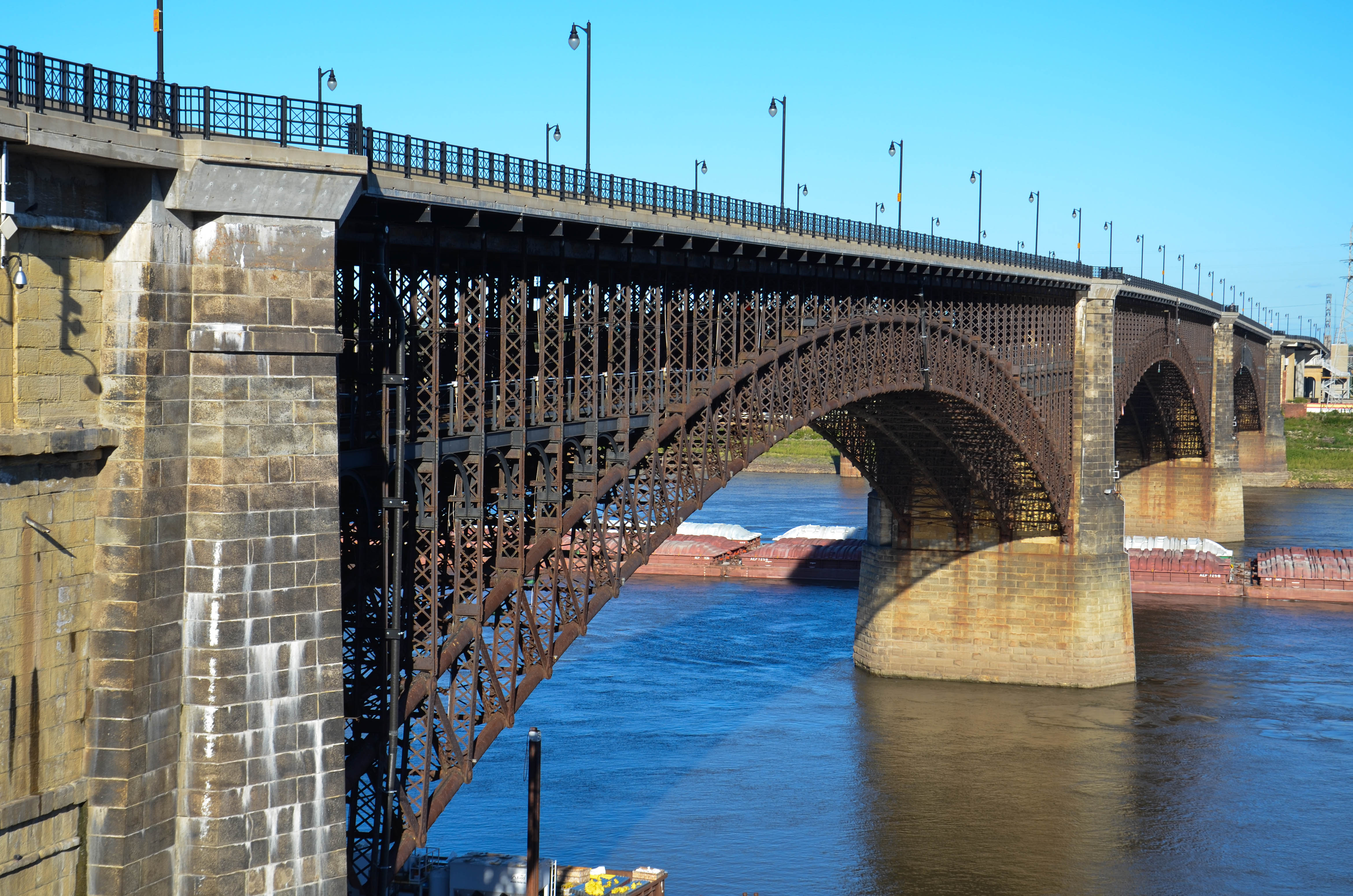
James Eads
ENGINEER

“The entire work—bridge, tunnel and approaches—are magnificent.”
—Andrew Carnegie
James Eads was often derogatorily called a “non-engineer” by many people of his day because he lacked the technical schooling of most engineers. But his lack of classical training may actually have been a blessing because he never heard about the engineering principles that classical schools taught were impossible. His designs were scoffed at by these so-called experts.
But Eads had the last laugh with the construction of the first major steel bridge across the Mississippi River.
THE EARLY YEARS

James Buchanan Eads was born on May 23, 1820, in Lawrenceburg, Indiana. The young man bounced around the Midwest while growing up and had very little formal education. Despite his educational shortcomings, he read any book he could find. The family settled in St. Louis when he was still a boy, and it didn’t take long for the motivated young man to land a job in the bustling riverboat industry.
By the age of 18, he was already working on riverboats. His early years on the river taught him valuable lessons. One of the most important thing he learned was that fortunes could be found on the bottom of the river.
RISE TO FAME

When Eads was about 22 years old, he invented a primitive type of salvage boat that allowed him to dive deep into the river to recover lost items. The diving contraption acted somewhat like a submarine. It allowed him to walk on the bottom of the river to search for lost bounty.
The business flourished as he picked up tons of iron, lead, and other cargo that had fallen from ships. He quit for a while to enjoy the money from his labor but was soon back with a business that was larger than ever. He now had ten boats in his fleet. Some of these boats were powerful enough to raise an entire ship from the floor of the river.
His experiences on the water put him on the forefront of history as the Civil War raged across the United States. He proposed to the federal government to construct steam-powered ironclad riverboats to assist Union ground forces to overcome Confederate forts downriver of St. Louis. The Union took up Eads’s offer, and he produced seven ships for the Navy in less than one hundred days.
SHOW ME SUCCESS

At the close of the war, Eads was ready to make his next historical mark on the Mississippi River. His theory was that railcar traffic would be vital to the development of the Western United States, but the river posed a major stopping point for the tracks.
He presented his idea to a number of cities and governmental groups to build a bridge connecting Illinois and Missouri. Every presentation was met with incredible opposition and ridicule. Engineering experts said the idea was impossible and impractical. Yet Eads persisted with the designs. The problem: a bridge of this size had never been built. So he faced added opposition for using an unproven material known as “steel” as the major structural component.
Political opponents also passed a bill to set a minimum span requirement of five hundred feet on the project so as not to interrupt riverboat traffic, which they believed doomed the project. But Eads beat them at their own game by making spans measuring 502, 520, and 502 feet over the river.
The incredible structure was completed quicker than anyone imagined. It was also turned stronger than predicted. A huge celebration was held on the opening of the bridge, but it didn’t translate into business success for Eads. Railroad companies faced pressure from politicians and other businesses, so they decided to boycott the structure and continue using ferryboats. He was in bankruptcy four years after the Eads Bridge opened.
Eads also gained damning criticism for his tenacious methods and competitiveness. He is even blamed for the loss of many lives in the bridge-building industry. Apparently, he had found a way to overcome Caisson’s Disease, or the “Bends,” by slowly lowering workers into the water depths by using a slow-moving elevator car. However, he failed to publish his information. Experts say that knowledge could have saved dozens of lives in the Brooklyn Bridge project alone.
Despite widespread contempt for his ideas in America, he became a popular engineer in many other parts of the world. He died at the age of 66 on March 8, 1887, in the Bahamas.
EXTRA, EXTRA!
- Eads is the first U.S. citizen awarded the Albert Medal of the Royal Society of Arts.
- Andrew Carnegie’s companies provided some of the steel for the Eads Bridge project.
- The Eads Bridge officially opened on July 4, 1874.
- *His famous family included his mother’s cousin, and Eads’ namesake, President James Buchanan.

